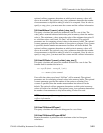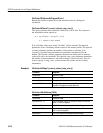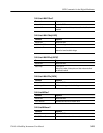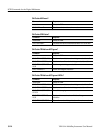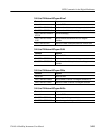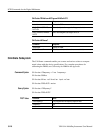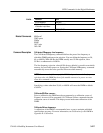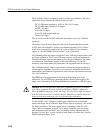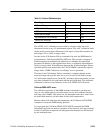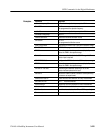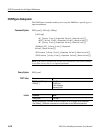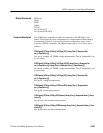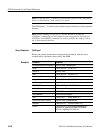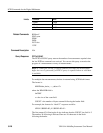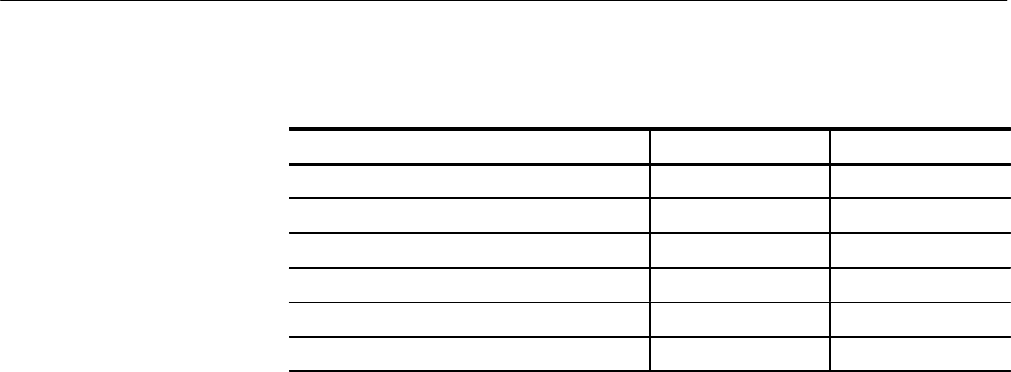
SCPI Commands for the Digital Multimeter
VX4101A MultiPaq Instrument User Manual
3–219
Table 3–5: Limits of Calibration Input
Mode/Range Low Limit High Limit
DC Gain, All Ranges 65% 100%
AC/DC Null, 30 mV Range 30% 40%
AC/DC Null, other Ranges 3.33% 25%
AC/DC Gain, All Ranges 65% 100%
4 wire Resistance, Gain, All Ranges 30% 100%
Current, Gain, All Ranges 65% 100%
The AC/DC “null” calibrations are provided at a nonzero value due to the
inherent null noise in any AC measurement system. The “null” calibration limits
shown permit a more linear calibration for the region of specified operation for
each range (10% to 100% of range value).
In order for the CALibration:VALue command to be used, the DMM must be
programmed for CALibration:SOURce EXTernal. This provides a measure of
protection against an unintentional calibration or calibration by unqualified
personnel. In addition to the required limits above, a calibration reasonableness
check is also provided. If the difference between the <Calibration Input Values>
specified and the value measured by the VX4101 DMM is outside the required
design limits, “DMM Calibration out of Range” error is generated.
The time for the CALibration:VALue command to complete depends on the
mode and range and typically takes one or two seconds for all modes (except
AC, which takes slightly more). In the DC, resistance and current modes, an auto
zero base calibration is also performed with the null calibration. This additional
calibration is used as a base reference for the CAL:ZERO:AUTO function.
CALibrate:ZERO:AUTO <auto>
The calibration procedure of the DMM includes commands to calculate and
store, in nonvolatile memory, the offset value of every null calibrated function
and range on the DMM. After power-on, the instrument reads these values from
the nonvolatile memory, and uses them for null drift compensation.
Because offset drifts with time and temperature, the CALibrate:AUTO:ZERO
command re-zeroes the DMM during operation.
If you program the CALibrate:ZERO:AUTO ONCE command, the DMM
immediately performs an autozero operation for the function and range currently
in effect. It will then compensate all subsequent measurements for that function
by the calculated value.



